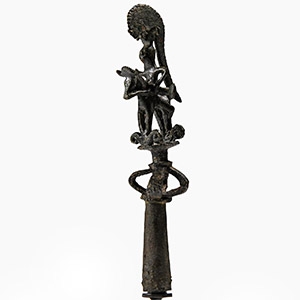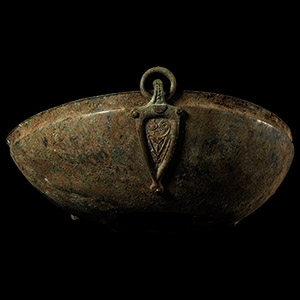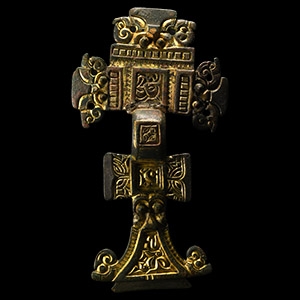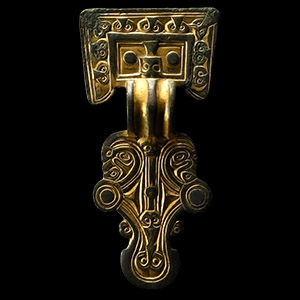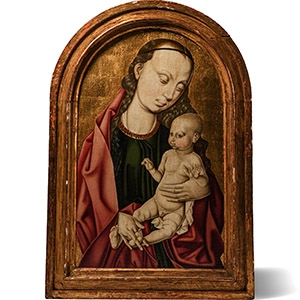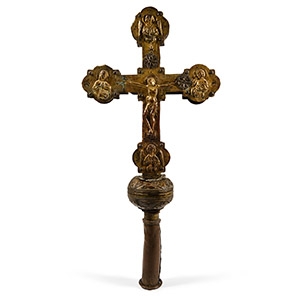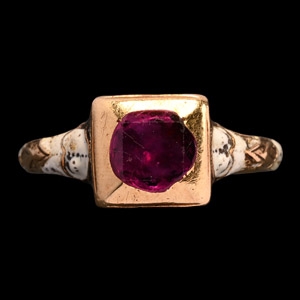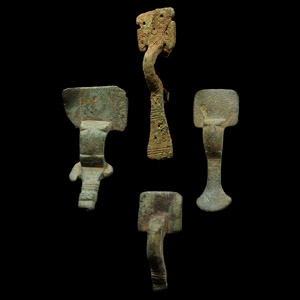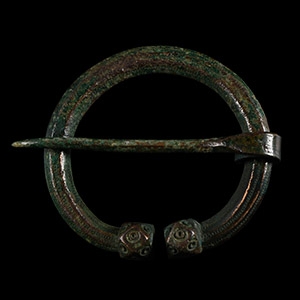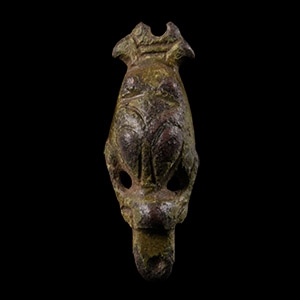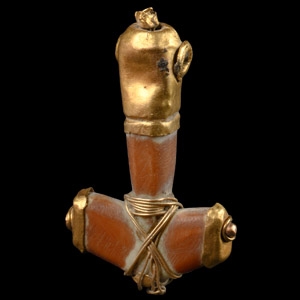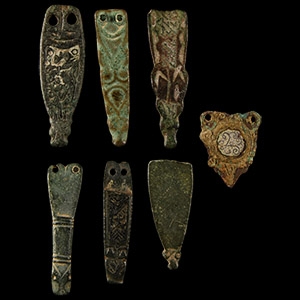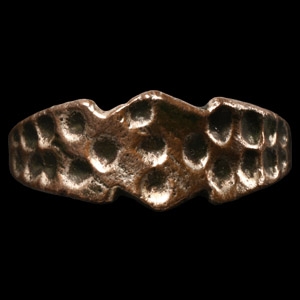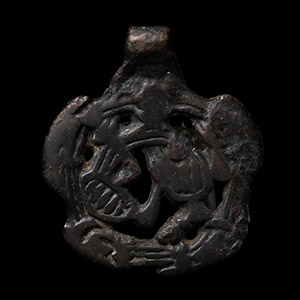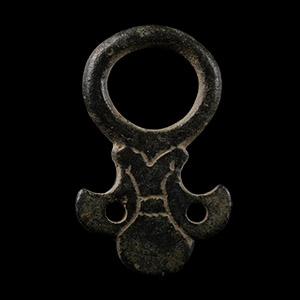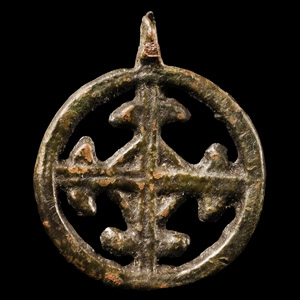Home > Auctions > 5 - 9 September 2023
Ancient Art, Antiquities, Natural History & Coins
Auction Highlights:
Found Berkshire, UK.
Accompanied by a copy of the British Museum's Portable Antiquities Scheme (PAS) report no.BERK-A98971.
From the collection of a North American gentleman, formed in the 1990s.
From the collection of a North American gentleman, formed in the 1990s.
Cf. Arbman, H., Birka I: Die Gräber, Uppsala, 1940, pl.91(6).
From the collection of a North American gentleman, formed in the 1990s.
From the collection of a North American gentleman, formed in the 1990s.
Acquired on the UK market, 1990s.
Property of a retired academic.
Acquired 1970s-1980s.
From the collection of a German gentleman living in London.
Ex private Merseyside, UK, collection, since 2015.
Cf. Arbman, H., Birka I: Die Gräber, Uppsala, 1940, pl.111(4), for type.
Found near Boxford, West Berkshire, UK, in 2001.
Accompanied by various correspondence with West Berkshire Council and the British Museum, including a letter disclaiming the brooch as treasure dated 22nd November 2001, BM Treasure case: 2001 T1.
Accompanied by PAS record id. PAS-D36287.
Published in Archaeology in West Berkshire 2001-2002, Front cover and p.11 (accompanied by an original copy of the publication).
The brooch is similar to Rhineland examples from Andernach and Bonn, Germany (H Kühn, Die germanischen Bügelfibeln der Völkerwanderungszeit in der Rheinprovinz(Bonn, 1940), Taf. 67: 6,3; 6,5; 6,6). However, a more ovoid form ending in an animal head is not impossible.
Acquired on the UK art market.
Property of a Ruislip, UK, gentleman, by inheritance.
Acquired on the German art market before 2000.
From an old Munich collection.
Cf. Korshyn, V.E., Yazicheskiye Priveski Drevniye Rusi X-XIV Vekov, Moscow, 2013, items K.1.02-04.
There is a class of discoid pendants with banded borders and contorted figures found in the hinterland of the Baltic region, associated with the influence of Scandinavian settlers. The design of these items recalls specific elements of Scandinavian art - for example, the 'gripping hands' motif is a feature of the Oseberg Style named after the famous Norwegian ship-burial. Oseberg Style is associated with the beginnings of the Viking age, and was current in the 9th century when Scandinavian settlers began to establish centres of trade and political control in the area of the rivers Dnieper and Volga. The motif has been interpreted as a horse and linked with various legends and mythic figures, including Sigurð's fight with the dragon Fafnir.
From the collection of a North American gentleman, formed in the 1990s.
Cf. Hammond, B., British Artefacts vol.3 - Late Saxon, Late Viking & Norman, Witham, 2013, item, 1.6-l, for type.
Acquired 1970s.
From the private collection of a Northern Ireland gentleman.
Ex private Merseyside, UK, collection.
Cf. Sedov, B.B., Finno-Ugri i Balti v Epokhi Srednevekovija, Moscow, 1987, pl.LVIII (19).
1165 - 1176 of 2453 LOTS

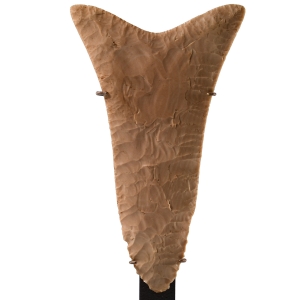
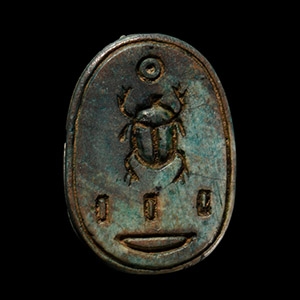
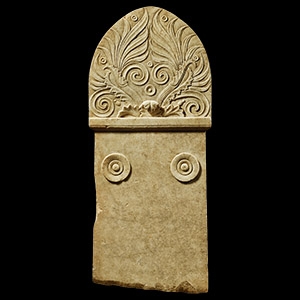
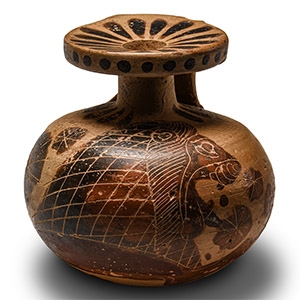
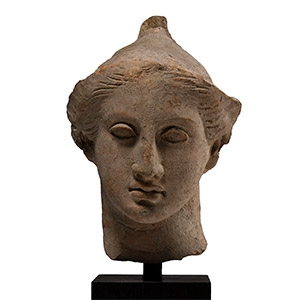
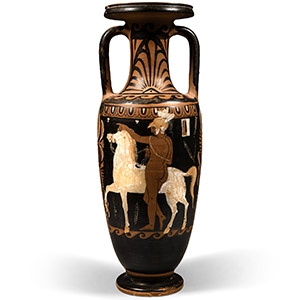
.jpg)
.jpg)
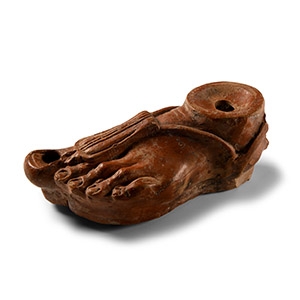
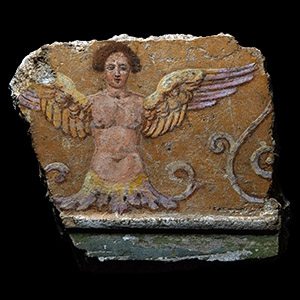
.jpg)
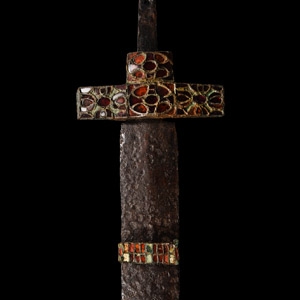
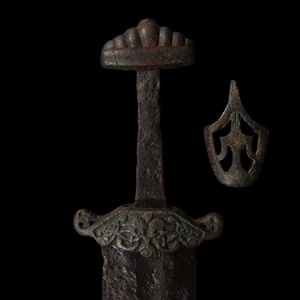
.jpg)
